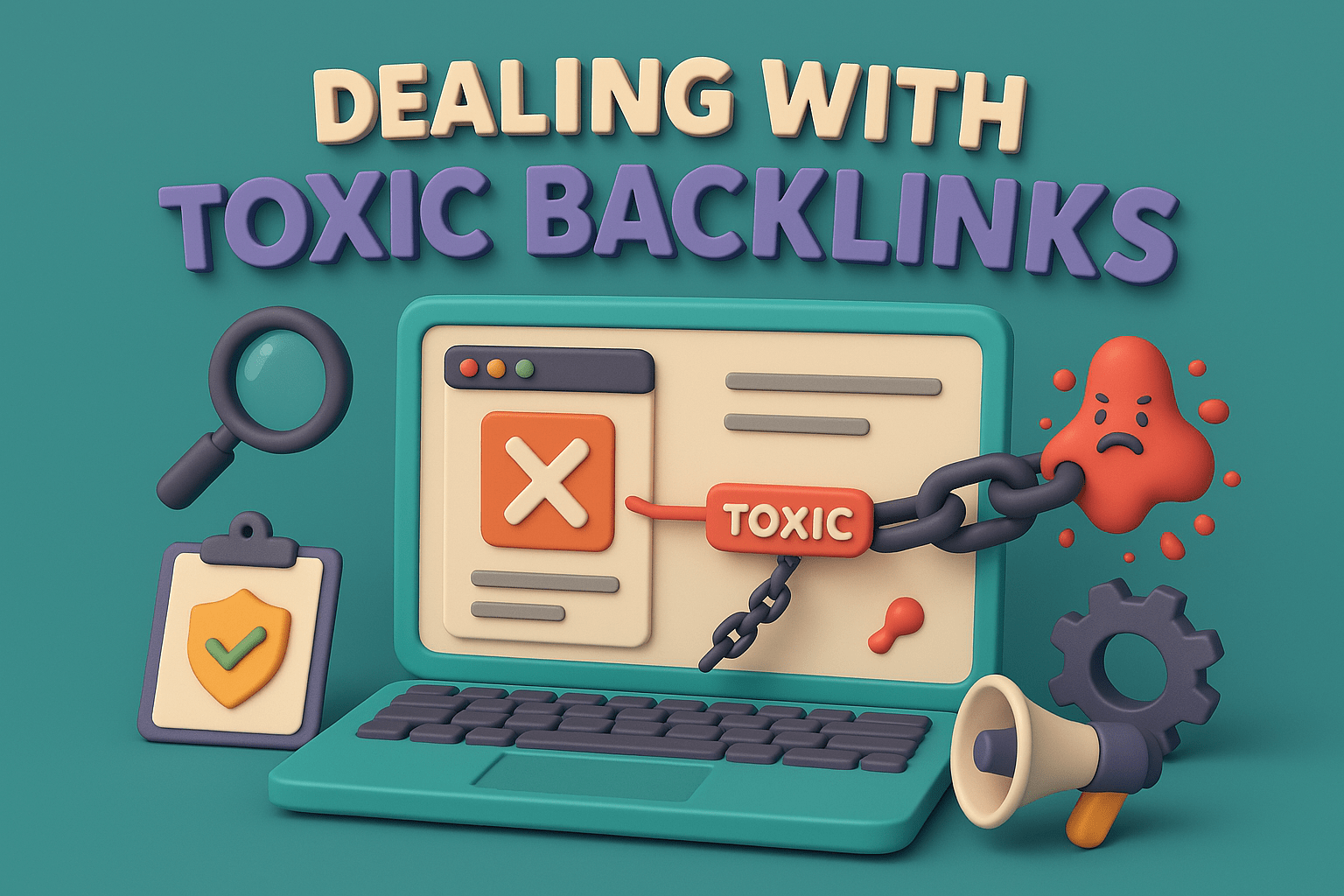How We Keep Up with Toxic Backlinks: Our Ongoing Strategy to Stay Safe from Google Penalties

Toxic backlinks are a major concern for anyone managing a website, especially for those who care about maintaining high Google rankings. If you're wondering “How are you guys keeping up with toxic backlinks?”, you're not alone. The presence of harmful or low-quality backlinks can lead to a range of issues, from sudden drops in rankings to potential Google penalties. In this post, we’ll share how we handle toxic backlinks, the tools we use, and the steps we take to protect our site from the risks associated with bad links.
What Are Toxic Backlinks?
Before we dive into our strategy, let’s define what toxic backlinks are. A toxic backlink is any link pointing to your website that can negatively affect its search engine rankings. These backlinks come from sites with low authority, questionable content, or spammy practices. Toxic backlinks may come from:
- Link farms or paid link networks
- Websites involved in black hat SEO
- Low-quality, irrelevant websites
- Untrusted directories or forums
Google’s algorithm is designed to detect and penalize websites that engage in manipulative link-building strategies. If toxic backlinks accumulate, it could result in a Google penalty — a serious setback for your site’s SEO.
Why You Should Care About Toxic Backlinks
Dealing with toxic backlinks isn't just about SEO best practices; it's about the overall health of your site. These are the main reasons you should actively monitor and manage toxic links:
- Protect your rankings: Toxic backlinks can directly harm your website’s ranking in Google search results.
- Avoid penalties: Google’s Penguin update targets sites with unnatural or spammy link profiles. A penalty can dramatically affect your site's visibility.
- Preserve your site's reputation: A healthy backlink profile builds trust and authority. Toxic backlinks can undo this hard-earned trust.
How We Detect Toxic Backlinks
Detecting toxic backlinks is the first step in managing them. Over time, we’ve honed a reliable process to identify potentially harmful links. Here's how we do it:
1. Use of Backlink Analysis Tools
We regularly use tools like Ahrefs, SEMrush, and Google Search Console to monitor our backlinks. These tools help identify:
- Unnatural spikes in backlinks: Sudden influxes of low-quality or irrelevant links often signal link-building attempts that could lead to penalties.
- Links from spammy websites: These could include adult sites, gambling sites, or any domains with a history of penalties.
- Anchor text over-optimization: Excessive use of the same keyword-rich anchor text across links is a red flag.
2. Manual Review
After identifying potentially harmful backlinks, we manually review them. This allows us to see if the backlinks are indeed toxic or if they were mistakenly flagged. This step involves checking:
- The relevance of the linking domain.
- The quality of the page linking to us.
- The context of the anchor text used.
How We Remove Toxic Backlinks
Once we’ve identified toxic backlinks, the next step is removal. Here’s our approach:
1. Contacting Webmasters
Our first attempt at link removal is always to reach out to the webmaster of the site that’s linking to us. We send a polite request asking them to remove the link. Here's an example of an email we send:
Hi [Webmaster],
I hope you're doing well. I recently came across a link on your website pointing to mine. After reviewing the content, we’ve determined that this link doesn’t align with our site’s SEO strategy. Could you kindly remove it? I’d appreciate your help in maintaining a clean and natural backlink profile.
Thank you for your understanding!
Best regards, [Your Name]
2. Using Google Disavow Tool
If a webmaster doesn’t respond or refuses to remove the link, our next option is using Google's Disavow Tool. This tool allows us to tell Google that we do not want certain backlinks to be considered when evaluating our site.
Here’s how we use the disavow tool:
- We create a file listing the toxic domains or URLs.
- Upload it through Google Search Console to ensure Google ignores these links.
- While disavowing links should be a last resort, it’s a powerful tool for cleaning up your backlink profile.
How We Build a Healthy Backlink Profile
To protect our website from future toxic backlinks, we focus on building a high-quality backlink profile. Here’s how we do it:
1. Focus on Relevant and Authoritative Websites
We only seek backlinks from relevant, high-authority websites within our niche. This includes:
- Guest posting on reputable blogs.
- Participating in industry forums and discussions.
- Building relationships with other content creators and influencers.
2. Avoid Paid Links or Link Farms
We steer clear of paid link schemes or buying links in bulk. These types of links are typically deemed unnatural by Google’s algorithm and can lead to penalties.
3. Create Link-Worthy Content
We continually produce high-quality, valuable content that naturally attracts backlinks. Content types that typically attract links include:
- In-depth guides and tutorials.
- Case studies and industry research.
- Infographics and shareable visuals.
Tools We Use to Monitor and Maintain a Healthy Backlink Profile
To stay on top of our backlink health, we rely on these powerful tools:
- Ahrefs: For identifying toxic backlinks, conducting a link audit, and analyzing competitors’ backlink strategies.
- SEMrush: A comprehensive tool for monitoring backlinks, disavowing links, and spotting link-building opportunities.
- Google Search Console: Provides insights into our backlink profile, including any potential manual penalties.
- Moz Link Explorer: Helps us assess the quality of incoming links.
- The Bottom Line: Keeping Your Website Safe from Toxic Backlinks
Dealing with toxic backlinks is an ongoing process, but it’s crucial for maintaining a healthy, high-ranking website. By regularly auditing your backlinks, removing harmful links, and focusing on building quality, relevant links, you can protect your site from penalties and improve your overall SEO strategy.
If you’re wondering “How are you guys keeping up with toxic backlinks?”, the answer is simple: vigilance, the right tools, and a well-defined strategy to keep your backlink profile clean.
FAQ
What are the signs that a backlink is toxic?
It comes from a website with low authority or spammy content.
The anchor text is overly optimized.
It originates from a link farm or irrelevant website.
How often should I audit my backlinks?
It’s good practice to audit your backlinks at least once a month, but if you're noticing a drop in traffic or rankings, do it immediately.
By implementing the strategies we’ve outlined here, you too can keep your website safe from toxic backlinks and maintain your position in Google’s search results. With the right tools and a proactive approach, you’ll ensure that your backlink profile remains strong and penalty-free.
